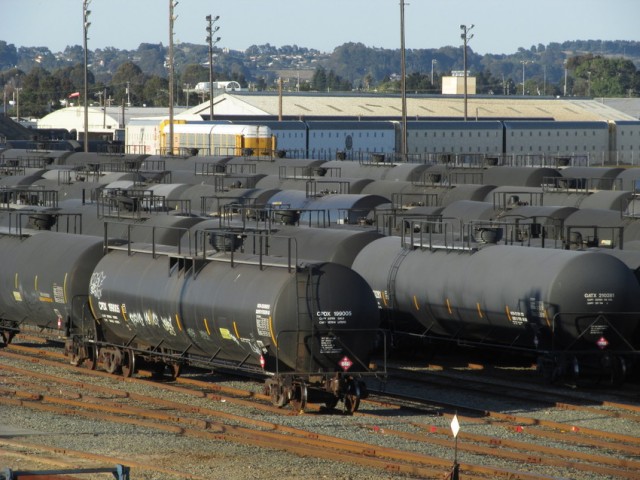
The U.S. Department of Transportation is proposing regulations that would make trains carrying oil safer. There have been several fiery oil train derailments in other parts of the country in the past year, and last July, a train carrying crude oil from North Dakota’s Bakken formation exploded in the town of Lac-Mégantic, Quebec, killing 47 people.
The new rules include lower speed limits, better brakes and safer rail cars.
“We’re pleased to see that these recommendations were made,” said Kelly Huston, a deputy director at California’s Office of Emergency Services. State regulators have been pushing for tighter federal regulations on oil trains.
Currently, one train a week carries a minimum of one million gallons of Bakken from North Dakota to a rail yard in Richmond.
Along with the proposed rules, the D.O.T. also issued a report finding that crude from the Bakken is more volatile than crude from other parts of the U.S., and that “there is an increased risk of a significant incident involving this material due to the significant volume that is transported, the routes and the extremely long distances it is moving by rail.”
